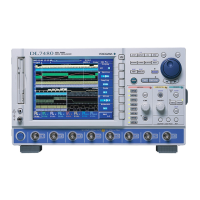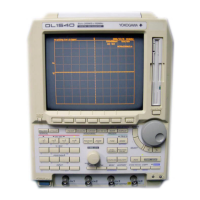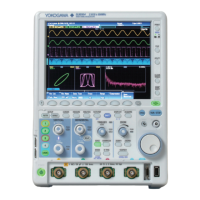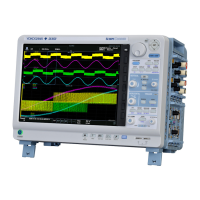Necessity of Phase Correction of the Probe
If the probe’s input capacitance is not within the appropriate range, the gain will not be steady in
relation to the frequency, and waveforms will not be displayed correctly. Also, because the input
capacitance is not the same for each probe, the probe’s have variable capacitors (trimmers) that need
to be adjusted. This adjustment is referred to as phase correction.
Always correct the phase of a probe that you are using for the first time.
Also, because the appropriate input capacitance range is different for each channel, you need to
perform phase correction when you change the channel that a probe is connected to.
Phase Compensation Signal
The instrument generates the following square wave signal from the COMP signal output terminal.
Frequency: 1 kHz ± 1%
Computation: 1 V ± 10 %
Differences in the Waveform due to the Phase Correction of the
Probe
Correct waveform
(increased gain in the high
frequency band)
(reduced gain in the high
frequency band)
Notes about Using Probes with the Frequency Module or SENT
Monitor Module
You cannot perform phase correction on a probe connected to the frequency module and SENT
monitor module. To use a probe with the frequency module or SENT monitor module, first perform
phase correction on the probe using another module.
3.6 Correcting the Probe Phase
3-29
IM DL850E-03EN
Making Preparations for Measurements
3
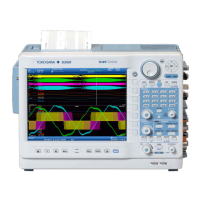
